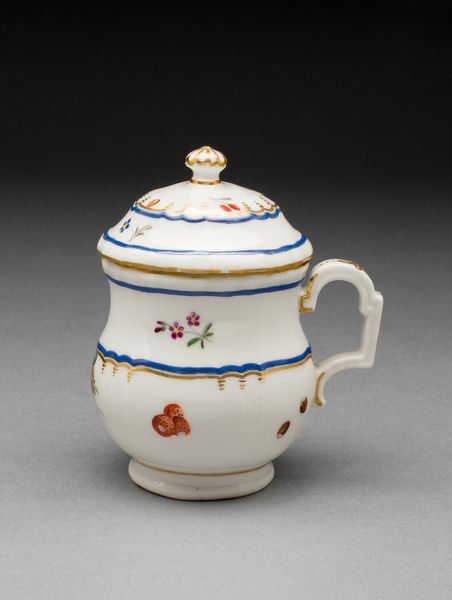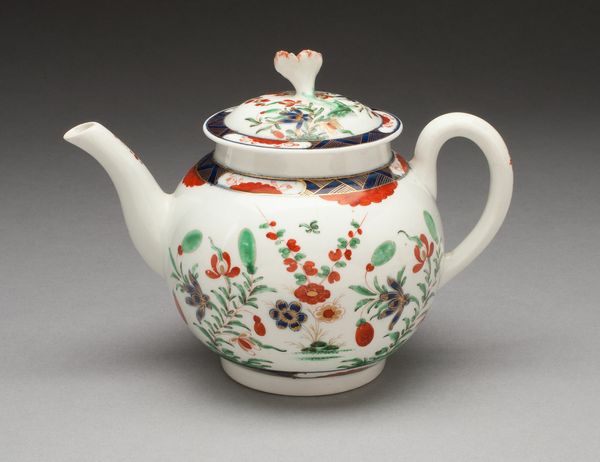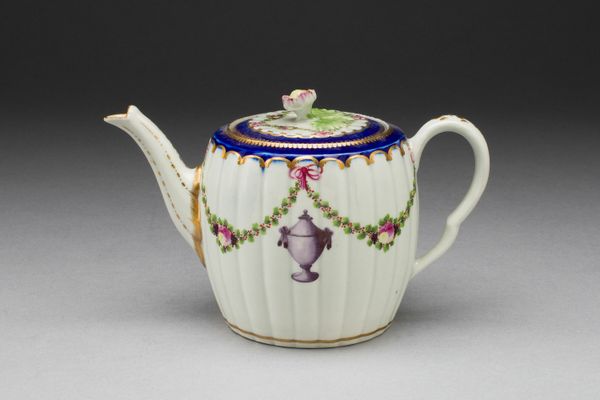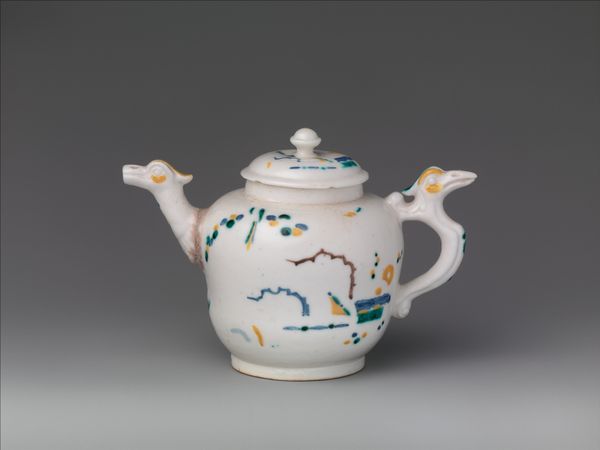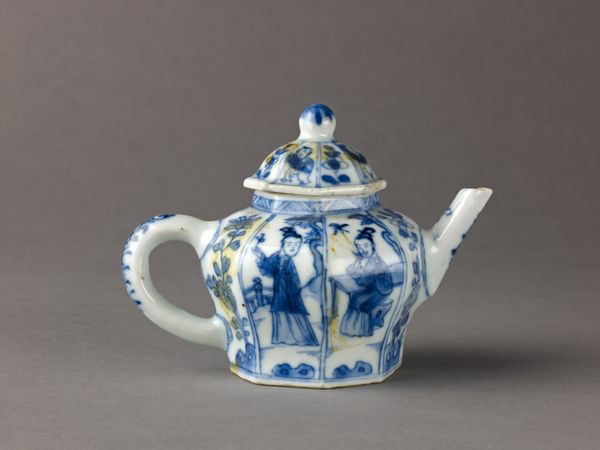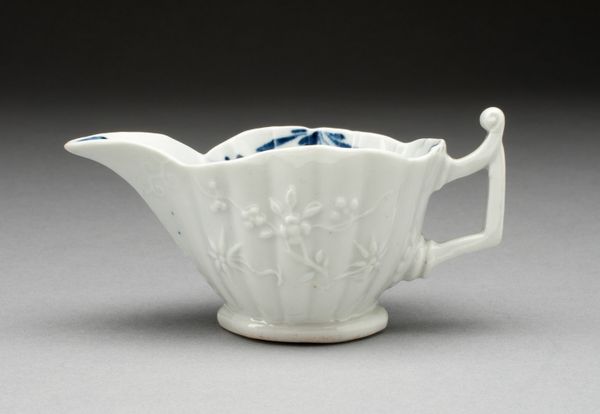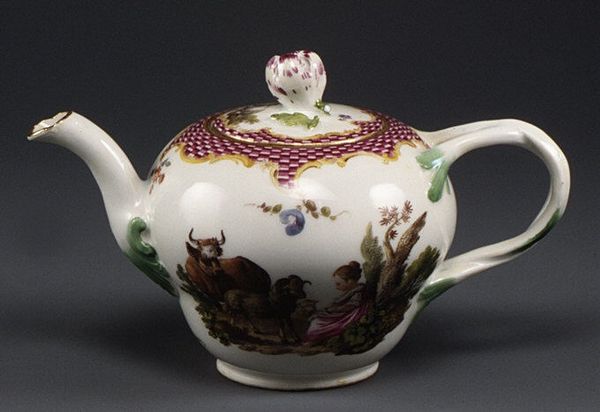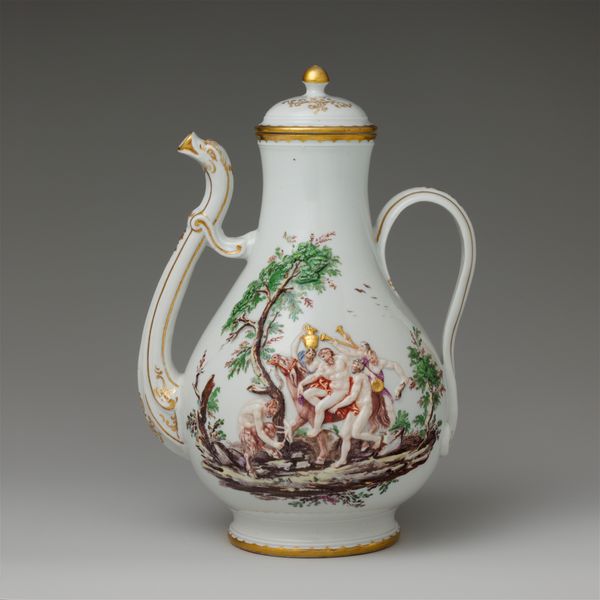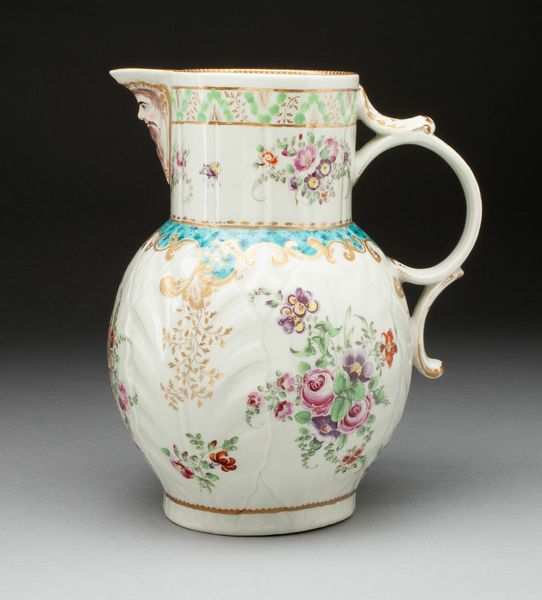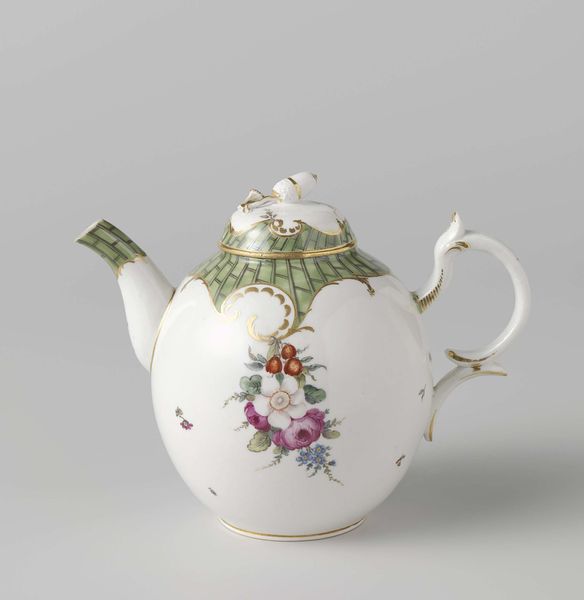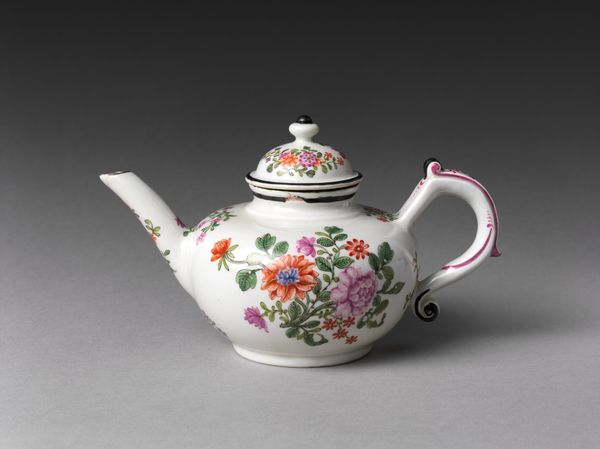
Dimensions: Height: 6 1/4 in. (15.9 cm)
Copyright: Public Domain
Curator: This charming ceramic teapot, a product of the Chelsea Porcelain Manufactory, dates from around 1770 to 1780. The Rococo styling is evident. What do you make of it? Editor: It's delicate. And there's a restraint, even an austerity, in the limited color palette of white, green, and gold. The fluted body and curving handle add to its elegant form, yet there is also an impression of utilitarian functionality. Curator: Right, Chelsea porcelain was known for its elegance, and it certainly catered to elite tastes. Examining its materiality tells us a lot about production – the kaolin clay sourced for true porcelain, the specialized labor involved in molding, firing, and painting, and the consumer market driving this production of luxury goods. Editor: It speaks to the societal rituals around tea, doesn't it? More than a beverage, the rituals of tea became central to gender roles, class distinction, and imperial trade. Owning such a piece signals adherence to, and investment in, a cultural matrix of meaning. Did the women brewing benefit from the labor used in its production? Or who grew the tea? Curator: Precisely, that trade fueled these industries! The delicate painting—those trailing vines—required skilled artisans, individuals who likely toiled anonymously, working to satisfy the aristocracy. We should also notice how such objects reinforce hierarchies. They acted as silent markers of social status. Editor: And this particular teapot, a mass produced commodity for London elites, might allude to England’s relationship to global resource extraction at the time—tea from China or India; raw materials for porcelain from exploited geographies. Curator: Precisely. To me, considering all the invisible labor makes this vessel less about passive aesthetics and more a record of intense production and value exchange. Editor: Placing this teapot within a socio-political landscape reshapes it from a pretty decorative object to a tangible symbol of historical power dynamics, forcing a wider investigation into luxury, taste, and privilege. Curator: A seemingly innocuous teapot unfolds to tell a layered narrative once you trace the materials, techniques, and historical context that converged in its creation. Editor: Yes. What at first seems ornamental reveals deeper histories when viewed through intersecting lenses.
Comments
No comments
Be the first to comment and join the conversation on the ultimate creative platform.
